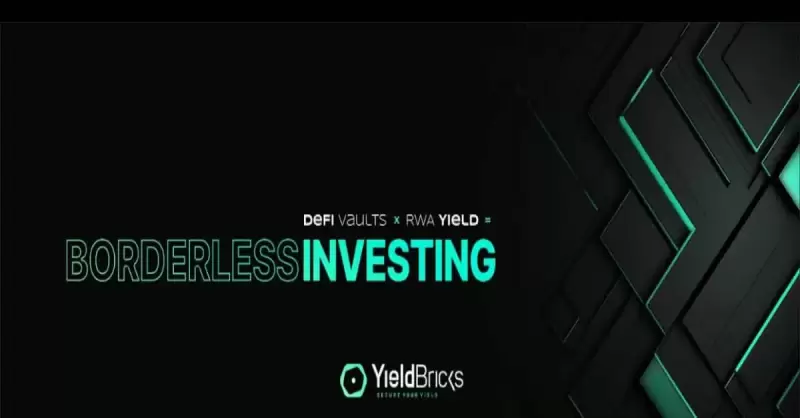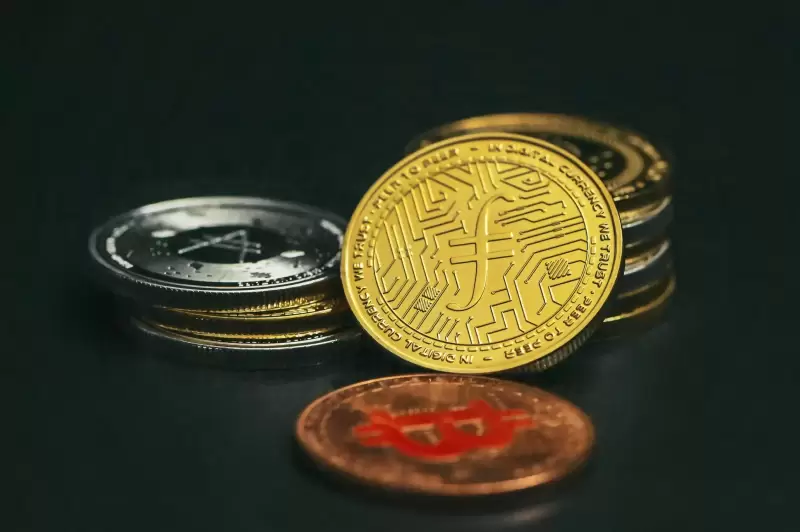 |
|
 |
|
 |
|
 |
|
 |
|
 |
|
 |
|
 |
|
 |
|
 |
|
 |
|
 |
|
 |
|
 |
|
 |
|
Cryptocurrency News Articles
The DeFi Paradox: Promises of Decentralization vs. Centralization Trends
Nov 25, 2024 at 01:08 pm
Decentralized finance (DeFi) was introduced as a revolutionary concept, promising to disrupt traditional finance by creating a peer-to-peer financial ecosystem without intermediaries such as banks, brokers, or other centralized institutions.

Decentralized finance (DeFi) was introduced as a revolutionary concept, promising to disrupt traditional finance by creating a peer-to-peer financial ecosystem without intermediaries such as banks, brokers, or other centralized institutions. The core idea behind DeFi is to leverage blockchain technology to build open, transparent, and decentralized financial services accessible to anyone with an internet connection.
However, as the DeFi market has evolved, a paradox has emerged: despite its foundations being built on decentralization, many DeFi platforms and protocols are exhibiting characteristics of centralization. This is in direct contrast to the initial promise of creating an entirely decentralized financial system. In this article, we will explore the reasons behind this trend, the challenges DeFi platforms face in achieving true decentralization, and the implications this has for the future of the DeFi market.
Before diving into why decentralization is lacking in the DeFi market, it’s essential to understand what DeFi is and how it is supposed to work.
DeFi refers to a set of financial services and products built on blockchain networks, primarily Ethereum, that aim to replicate traditional financial instruments such as lending, borrowing, trading, insurance, and asset management—without the need for a central authority. The idea is to provide financial services through smart contracts, which are self-executing contracts with the terms of the agreement directly written into code. These smart contracts are transparent, immutable, and decentralized.
Key components of the DeFi ecosystem include:
* **Decentralized protocols:** These are the underlying blockchain networks and smart contracts that power DeFi applications, enabling users to interact with each other and perform various financial transactions without the involvement of a central authority. Examples include Ethereum, Aave, and Uniswap.
* **Decentralized applications (dApps):** These are user-facing interfaces that allow users to access and interact with DeFi protocols in a convenient and intuitive way. Some popular dApps include MetaMask, Uniswap Interface, and Aave Web App.
* **Decentralized exchanges (DEXs):** These are peer-to-peer marketplaces that facilitate the trading of cryptocurrencies without the need for a centralized intermediary. Instead, trades are executed directly between users through smart contracts. Examples include Uniswap, Sushiswap, and PancakeSwap.
* **Governance tokens:** Many DeFi protocols issue their own tokens, which serve as a native currency within the protocol and also grant holders the ability to participate in the governance of the protocol. By holding and using governance tokens, users can vote on changes to the protocol, such as interest rates, new features, and protocol upgrades.
Decentralization in DeFi is crucial because it removes the need for trusted intermediaries. Users can interact directly with protocols, smart contracts, and other users without needing to trust any third party. This leads to greater financial inclusion, transparency, and security.
When DeFi protocols were first launched, the vision was clear: to create a financial ecosystem where users could maintain full control over their assets without relying on centralized financial institutions. This idea was particularly appealing because traditional finance has been heavily centralized for centuries, with banks and institutions controlling access to credit, capital markets, and payment systems.
The principles of decentralization in DeFi are supposed to manifest in several ways:
* **Decentralized governance:** DeFi protocols are typically governed by a community of users who hold the protocol's governance tokens. This decentralized governance structure allows users to participate in decision-making and influence the direction of the protocol without the control of a single entity.
* **Autonomous operation:** DeFi protocols are designed to function autonomously, without the need for manual intervention or centralized control. Once deployed on the blockchain, the protocol's rules and parameters are set and enforced automatically by the smart contracts.
* **Open and permissionless access:** DeFi protocols are usually open to anyone with an internet connection, without the need for approval or authorization from a central entity. This inclusivity promotes a level playing field and fosters a diverse community of users.
* **Pseudonymous interactions:** DeFi protocols typically allow users to interact and perform transactions without revealing their real-world identities. This pseudonymity enhances privacy and protects users from discrimination or censorship.
Despite these lofty goals, the DeFi market is struggling to achieve true decentralization. Let’s look at the key reasons why.
Also, read – What Are Flash Loans In The DeFi Market And Its Top 4 Shocking Examples
Centralization Trends in the DeFi Market
1. Concentration of Token Ownership and Governance Power
One of the most significant challenges to decentralization in DeFi is the concentration of token ownership. Many DeFi projects issue governance tokens, which are meant to give token holders the power to vote on protocol upgrades, changes to interest rates, and other crucial decisions. However, a large percentage of these tokens are often held by a small group of investors, early project backers, and venture capital firms.
For example, in some cases, it has been found that less than 10% of token holders control the majority of governance votes. This results in a centralization of decision-making
Disclaimer:info@kdj.com
The information provided is not trading advice. kdj.com does not assume any responsibility for any investments made based on the information provided in this article. Cryptocurrencies are highly volatile and it is highly recommended that you invest with caution after thorough research!
If you believe that the content used on this website infringes your copyright, please contact us immediately (info@kdj.com) and we will delete it promptly.
-

-

- Two Ondo Finance wallets transferred 13.83 million tokens worth $12.2 million into Coinbase Prime about four hours ago.
- Apr 11, 2025 at 06:40 am
- Ondo Finance continues to build on a wider industry trend in their ecosystem through their recent token deposit at Coinbase Prime which provides insights about their token accumulation and flow management strategies.
-

-

-

-

-
![The downtrend of Hyperliquid [HYPE] has not halted The downtrend of Hyperliquid [HYPE] has not halted](/assets/pc/images/moren/280_160.png)
-

-


















![🐢Super Mario World Koopa Troopa 100% 96⭐️ + Coin [Ao Vivo] 🐢Super Mario World Koopa Troopa 100% 96⭐️ + Coin [Ao Vivo]](/uploads/2025/04/10/cryptocurrencies-news/videos/super-mario-koopa-troopa-coin-ao-vivo/image-1.webp)








































![The downtrend of Hyperliquid [HYPE] has not halted The downtrend of Hyperliquid [HYPE] has not halted](/uploads/2025/04/11/cryptocurrencies-news/articles/downtrend-hyperliquid-hype-halted/middle_800_480.webp)

